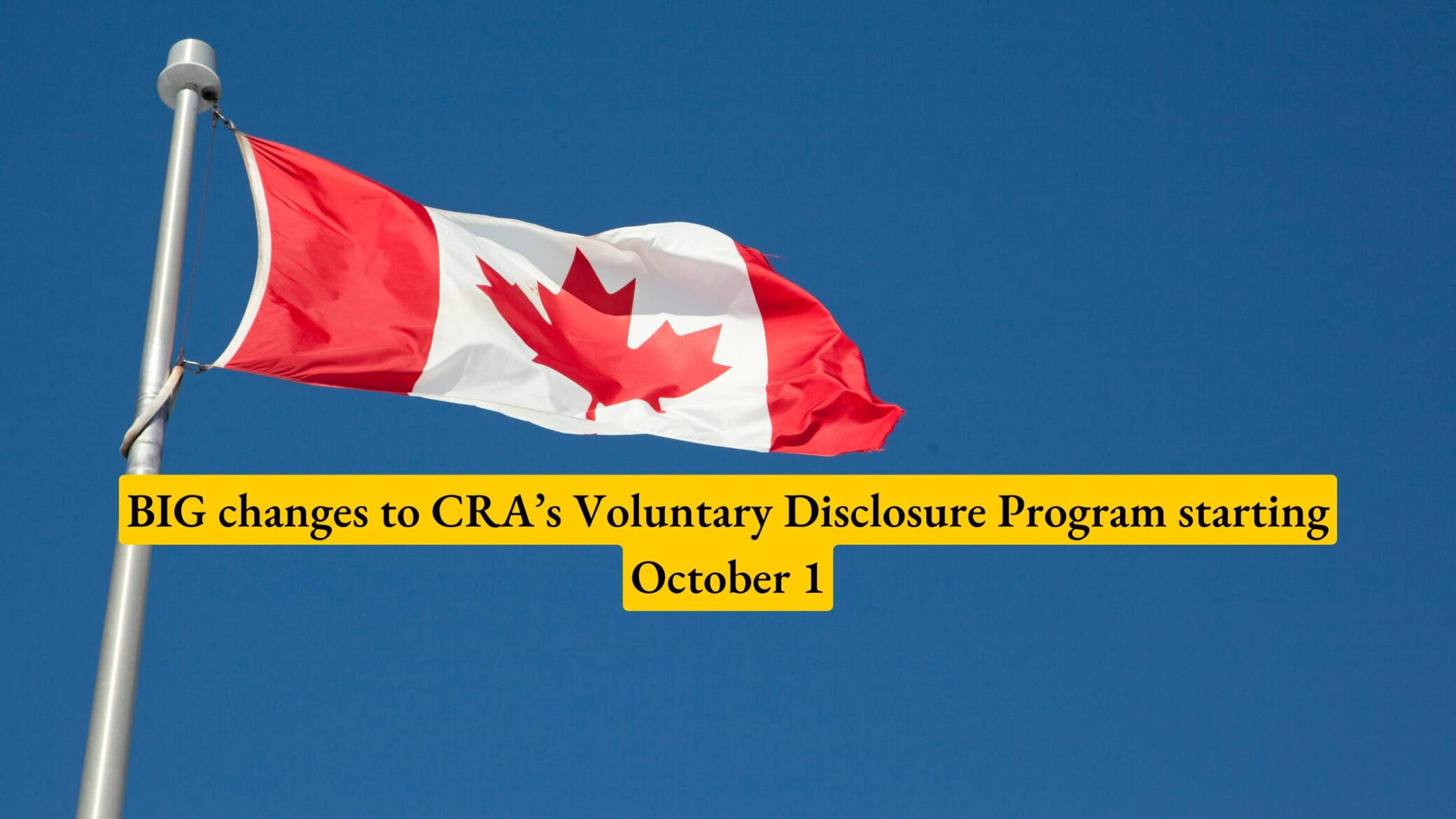BIG changes to CRA’s Voluntary Disclosure Program starting October 1
If your company is considering undertaking a voluntary disclosure with the Canada Revenue Agency (CRA), there are some significant changes coming October 1, 2025. The new policy applies to any tax program that is administered by the CRA (income tax, GST/HST, payroll, excise tax, etc.) and all new submissions made on or after October 1 will be under the new rules.
We originally posted a quick overview of the changes back in September, and in this article we explore these changes in more detail and contrast what’s new and what stays the same.
What are the changes to the CRA’s Voluntary Disclosure Program (VDP)
The CRA is aiming to simplify the VDP and to make it more “attractive” for businesses and organizations to come forward and rectify their various tax affairs, from GST/HST to payroll to international taxation. Currently, for a GST/HST disclosure, there are three “paths” or programs that address penalty or interest relief when undertaking a disclosure: (1) the General Program, (2) the Limited Program and (3) “Wash transactions” Program. For income tax purposes, there are just two programs: (1) General Program and (2) the Limited Program.
In both cases, the Limited Program is just that, “limited” relief of penalties and interest, whereas the General Program tended to include everything else and generally allowed for full penalty relief and the business would not subject to a CRA criminal investigation. In addition, up to 50% of the interest owing would typically be waived for the three most recent years.
Under the Limited Program, the business would not face gross negligence penalties or be referred to the CRA’s criminal investigation division, but all other penalties would be applied and there would be no interest relief for any years disclosed. Therefore, if a business was facing the prospect of making a VDP submission under the existing program, the outcome would not be enticing. Thus, a change was needed to make the VDP more attractive again, similar to the program that existed prior to 2018.
How do the new Voluntary Disclosure Program changes work?
For VDP submissions made after September 30, the nature of the relief will depend on whether a submission was “prompted” or “unprompted”. For the latter, all penalties are waived along with 75% of the interest, where a “prompted” disclosure would see 25% relief for any interest and “up to 100%” relief from penalties. For GST/HST purposes, a valid VDP that is considered to be a “wash transaction” would be eligible for full penalty and interest relief for most reporting periods disclosed.
The introduction of the “prompted” vs. “unprompted” criteria is meant to provide the different types of relief based on whether the business initiated the disclosure in good faith and prior to being prompted by the CRA or another tax or policing authority, etc. For example, an unprompted disclosure might involve a business that has not received any written or verbal correspondence from the CRA about a specific identified compliance issue that is “connected” to the disclosure being made. Generally, “education letters” or “warnings to an industry” would not likely be of the “prompted” variety.
Alternatively, a “prompted” disclosure submission may involve a specific verbal or written communication to the business regarding a specifically identified compliance issue, that pertains to the disclosure being made. “Prompted” may also include situations where the CRA has received information from a third party about the business (or a person related to the business) pertaining to the business’ disclosure of the issue(s).
What’s not changing after September 30, 2025?
The principle of “voluntary” still applies and the type of relief is now determined based on whether the VDP submission was prompted or not. The information and tax being disclosed must still be at least one reporting period (for GST/HST purposes) or one taxation year (for income tax) past due.
The VDP application must still provide all relevant information, returns, schedules, etc. and be done promptly in cooperating with the CRA VDP officials and the submission includes an error or omission that would be subject to interest, penalties or both. Importantly, payment of the applicable tax (including certain interest and penalties) or a suitable payment arrangement must be made.
The existing RC199 VDP submission form will remain as a required form and has been re-designed to be easier to use and navigate. The new RC199 form (link) has now been made available. The CRA will also allow businesses or their representatives to undertake no-names pre-disclosure discussions to (a) get insight into the VDP process, (b) understand the risks of not complying and (c) better understand the relief available in their specific situation.
Our takeaways
It is clear that the CRA felt that the policy that the Trudeau Liberals introduced in 2018 was overly restrictive, which, as predicted by many in the tax community at the time of those changes, led to a drop in the volume of submissions. This was entirely predictable due to various uncertainties related to the previous conditions around what was considered to be “voluntary” and “complete”. This new approach should encourage more non-compliant businesses to come forward and correct their Canadian tax affairs under tax programs administered by the CRA, and we are happy to see the CRA re-think these policies.
Simple stuff right? At Achen Henderson, we have a team of Canadian indirect tax, domestic and international tax specialists as well as customs and trade professionals to help your business navigate the CRA’s new and improved voluntary disclosure program.

